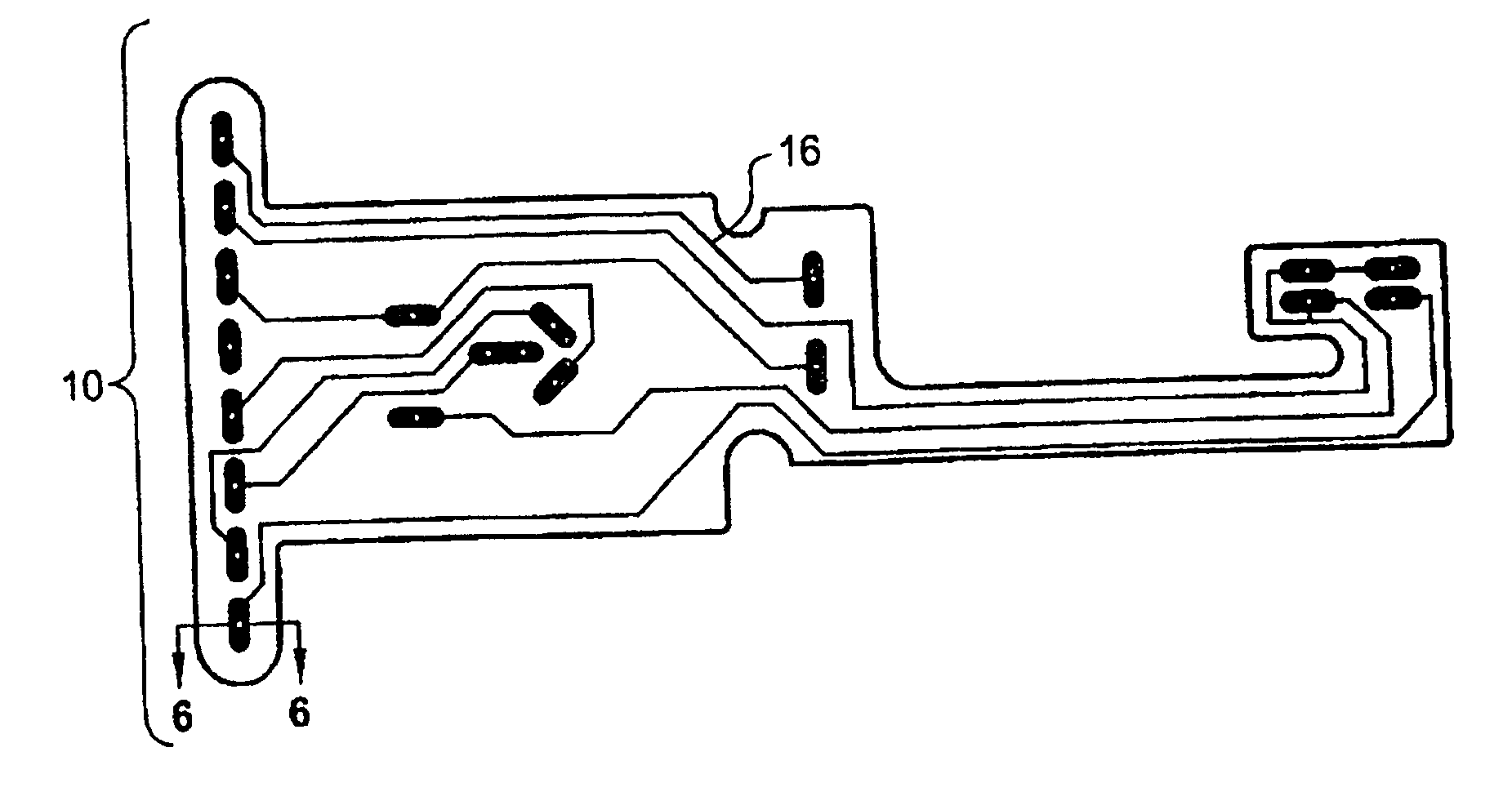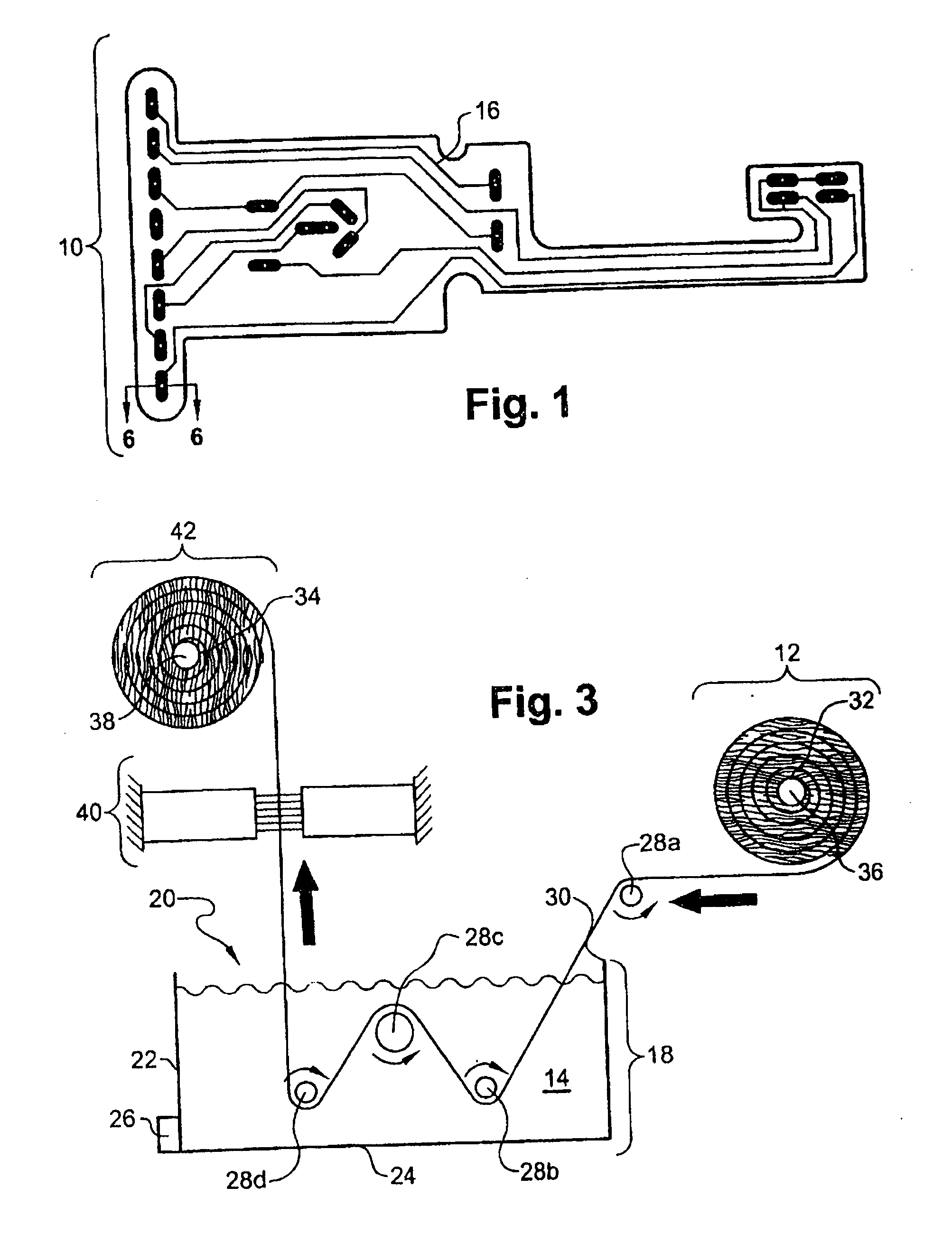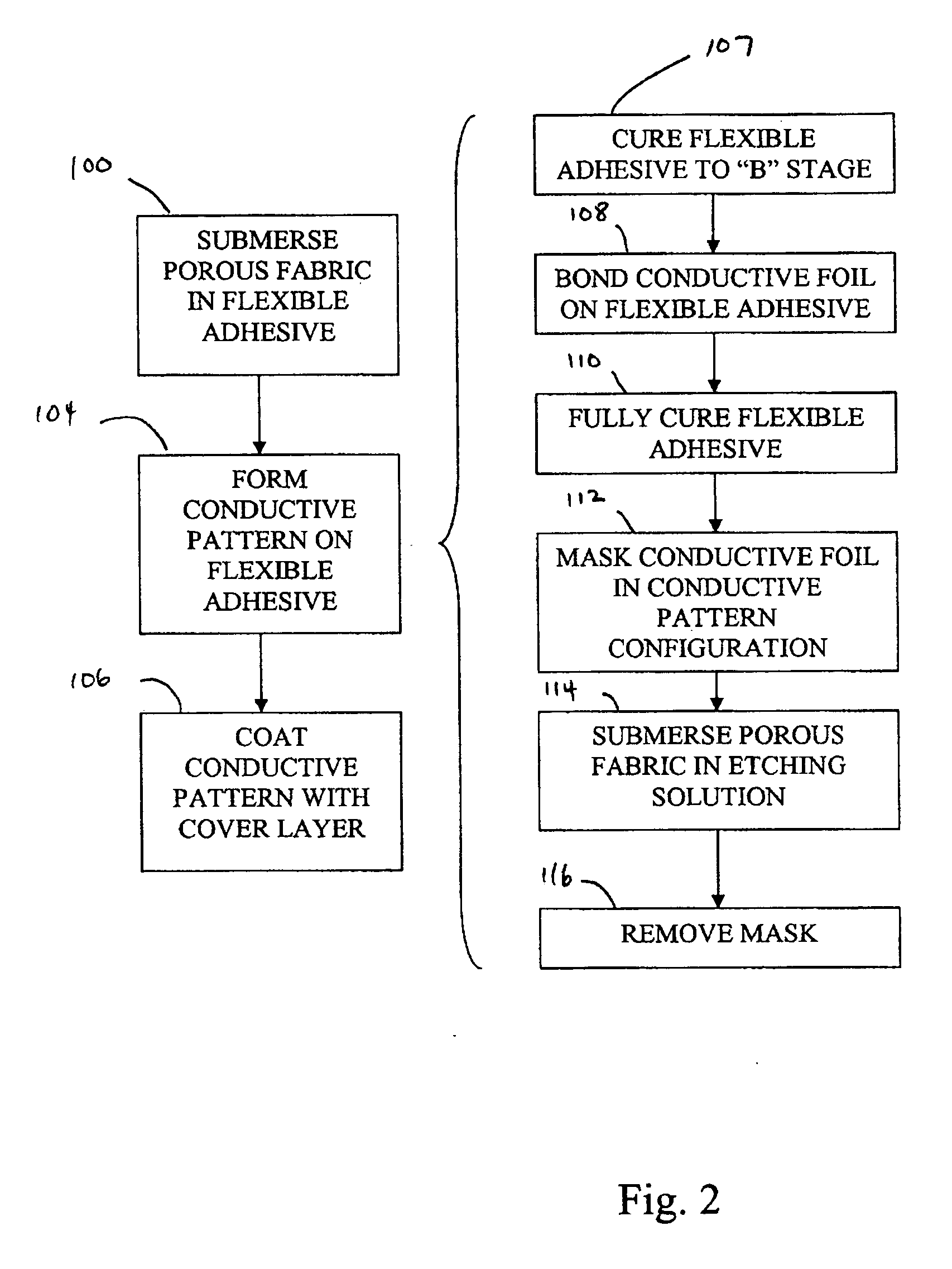Flexible circuit
- Summary
- Abstract
- Description
- Claims
- Application Information
AI Technical Summary
Benefits of technology
Problems solved by technology
Method used
Image
Examples
Embodiment Construction
[0031] Referring now to FIGS. 1-3, a flexible circuit 10 is shown fabricated by submersing (step 100) a fabric 12 in an adhesive 14, forming (step 104) a conductive pattern 16 on the adhesive 14 of one side of the fabric 12, and coating (step 106) the conductive pattern 16 with a cover layer to protect the conductive pattern 16. The step of submersing 100 the fabric 12 in the adhesive 14 permits the adhesive 14 to flow through the fabric's interstices such that bending or flexing the flexible circuit 10 and / or the application of thermal stresses does not delaminate the adhesive 14 from the fabric 12. This step is different from the prior art process discussed in relation to FIG. 2A. In FIG. 2A, the adhesive is adhered to the exterior surface of the base film, whereas, the adhesive 14 discussed in relation to the present invention is disposed between the interstices of the fabric 12. Additionally, the adhesive 14 may be effectively formulated so as to adhere to the conductive pattern...
PUM
| Property | Measurement | Unit |
|---|---|---|
| Temperature | aaaaa | aaaaa |
| Flexibility | aaaaa | aaaaa |
| Electrical conductor | aaaaa | aaaaa |
Abstract
Description
Claims
Application Information
 Login to View More
Login to View More - R&D
- Intellectual Property
- Life Sciences
- Materials
- Tech Scout
- Unparalleled Data Quality
- Higher Quality Content
- 60% Fewer Hallucinations
Browse by: Latest US Patents, China's latest patents, Technical Efficacy Thesaurus, Application Domain, Technology Topic, Popular Technical Reports.
© 2025 PatSnap. All rights reserved.Legal|Privacy policy|Modern Slavery Act Transparency Statement|Sitemap|About US| Contact US: help@patsnap.com



